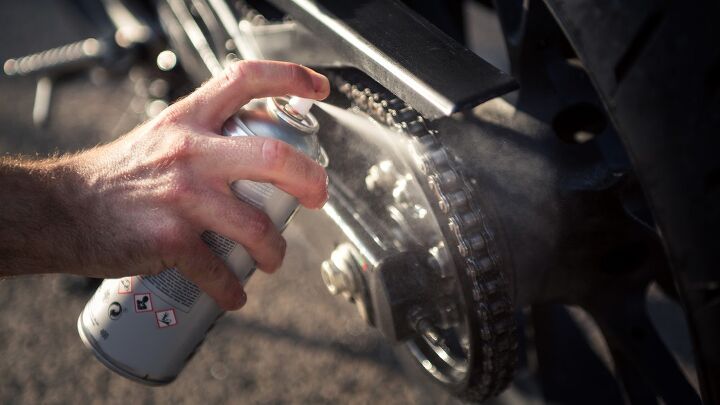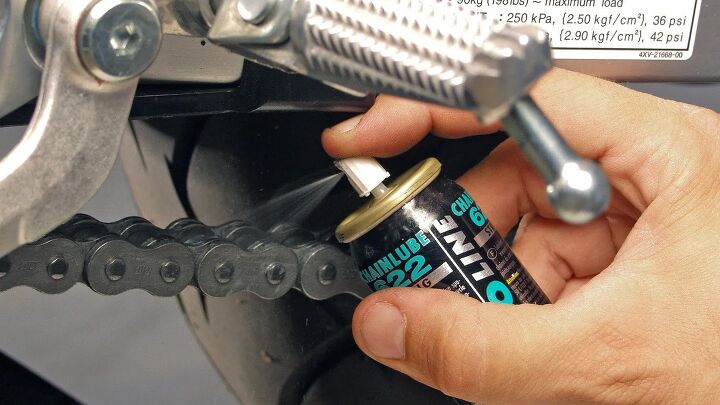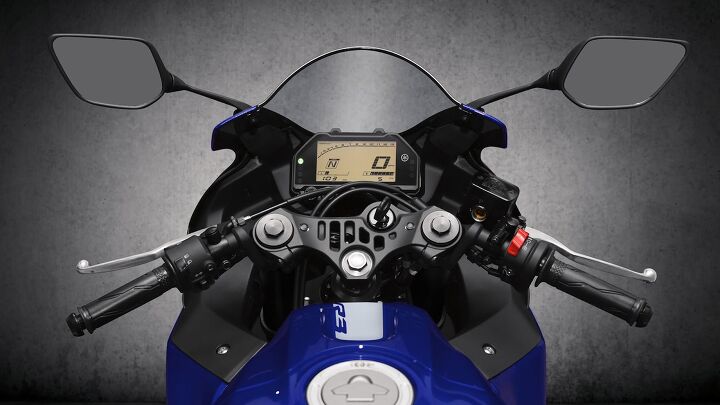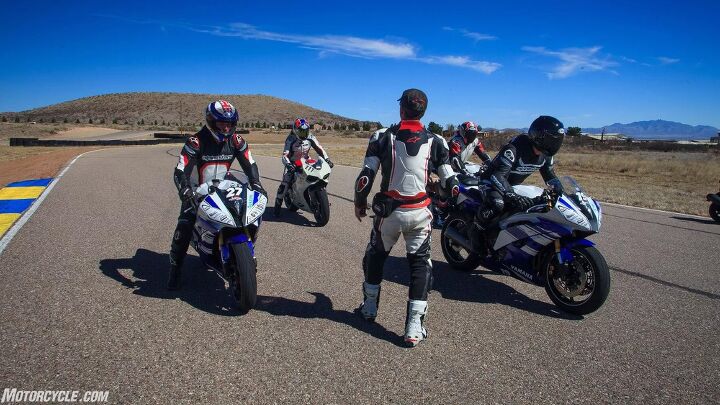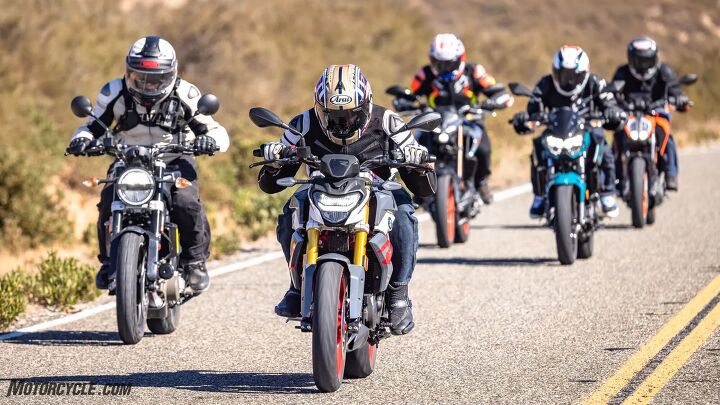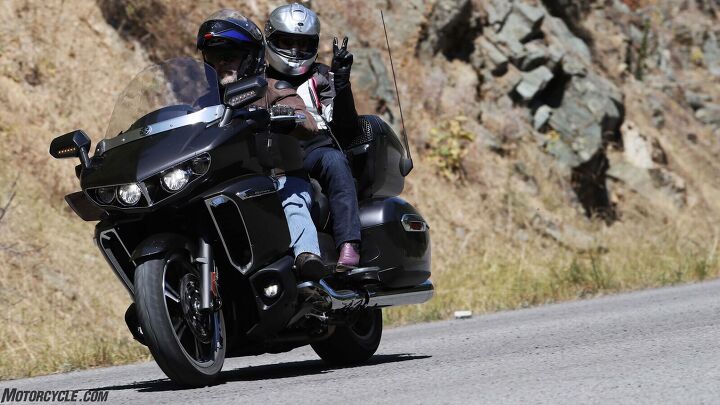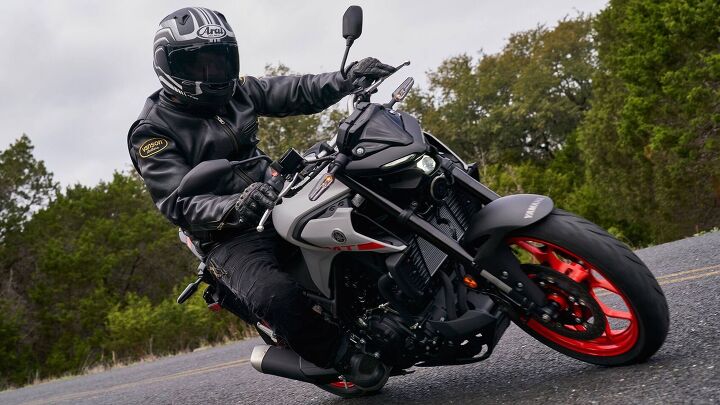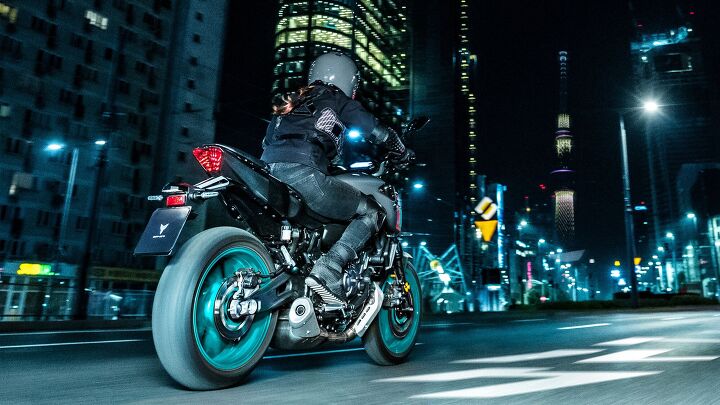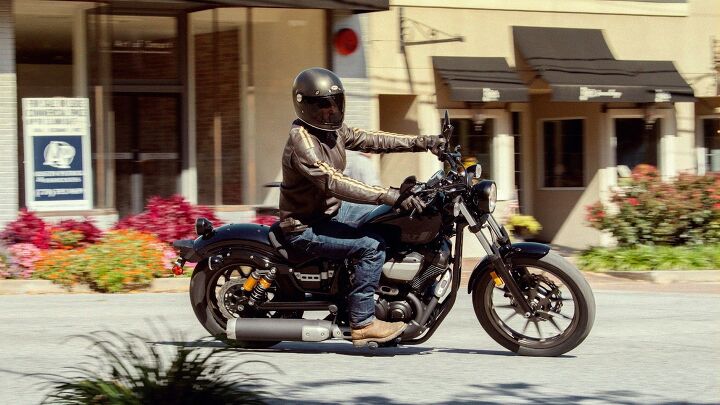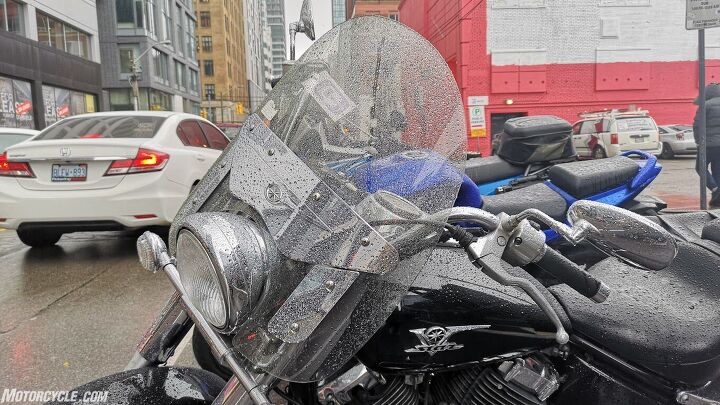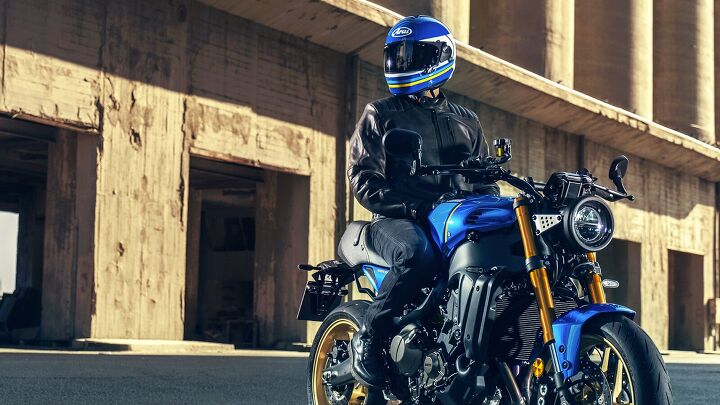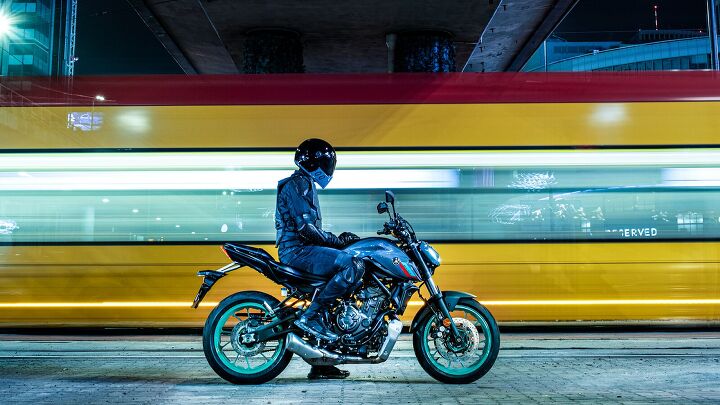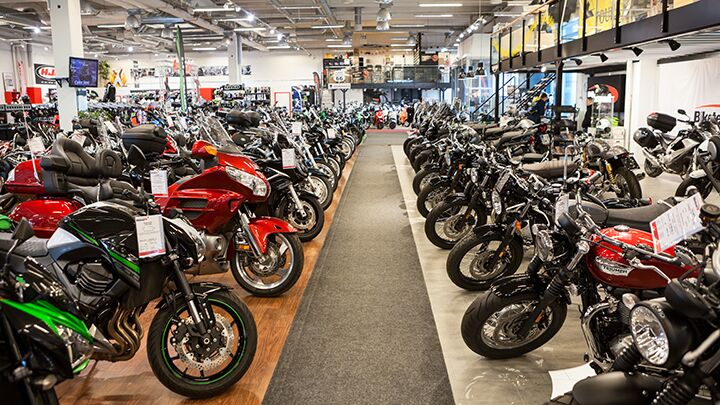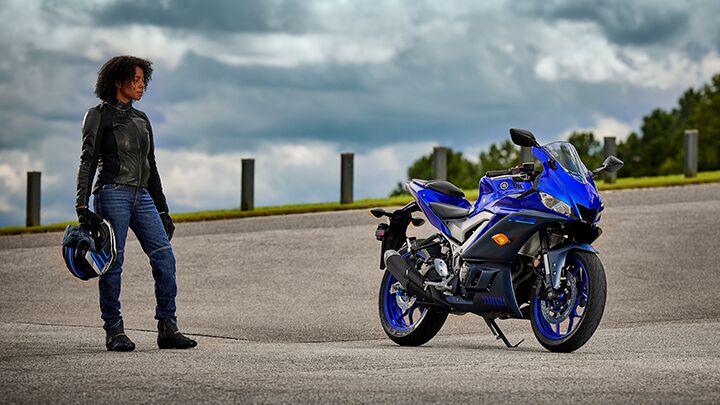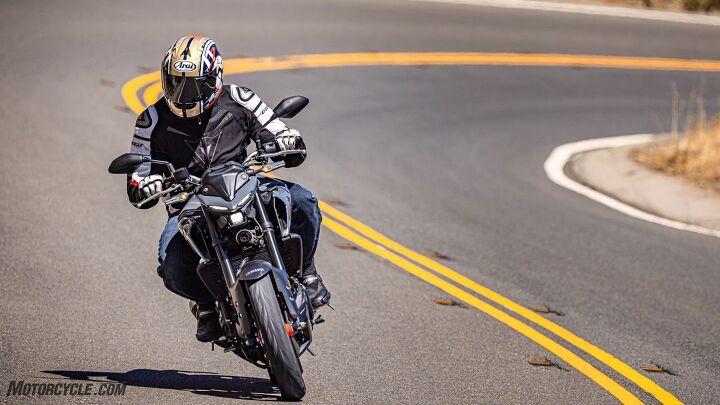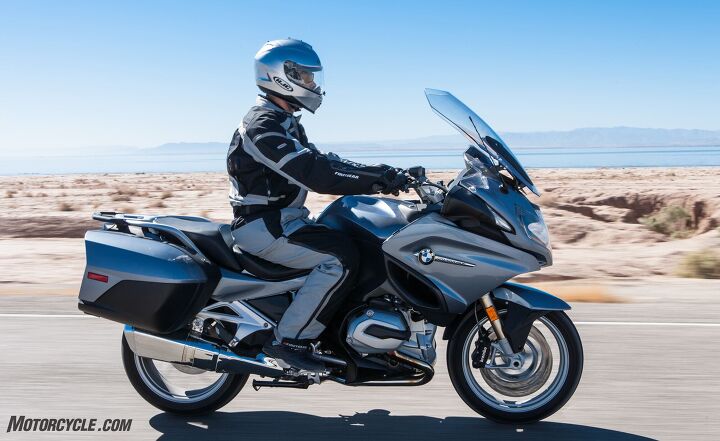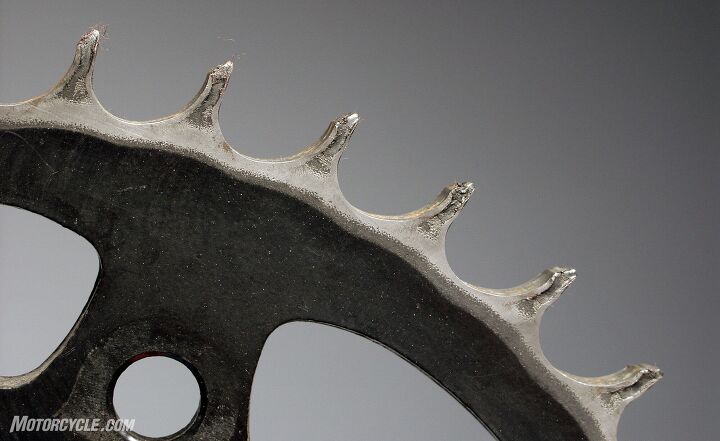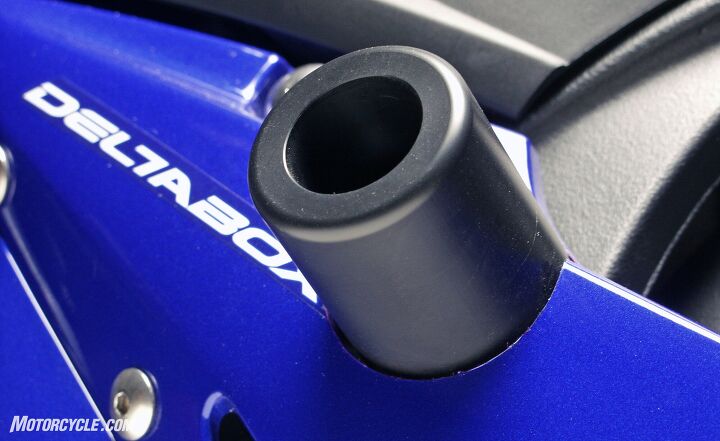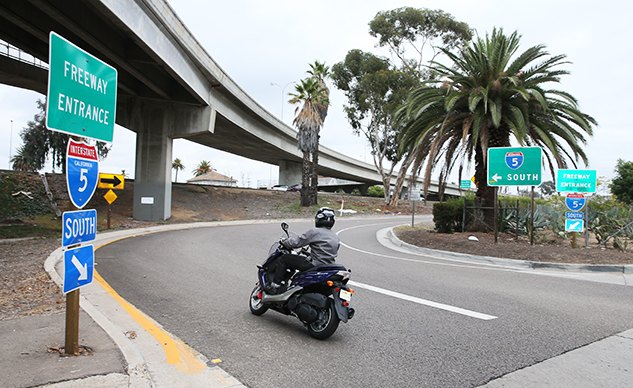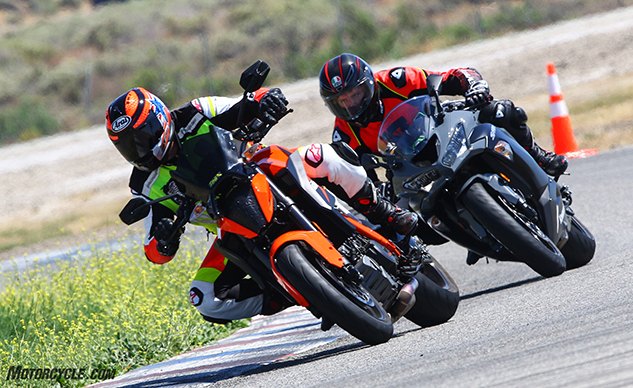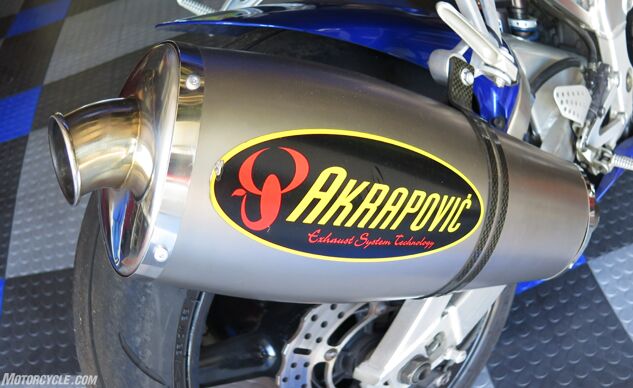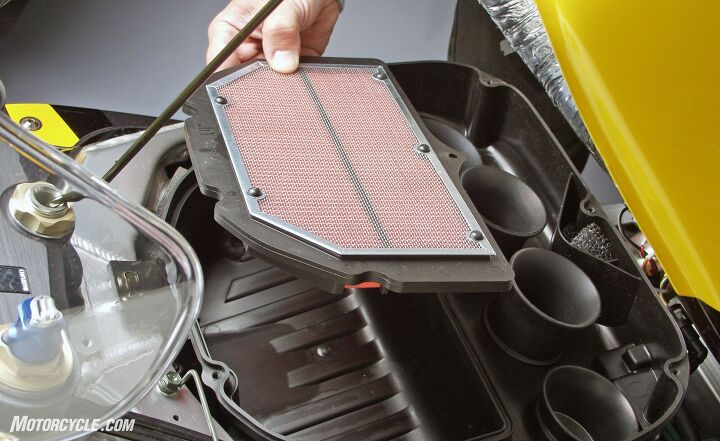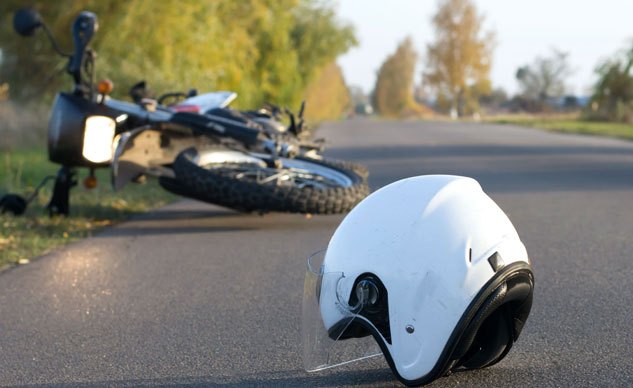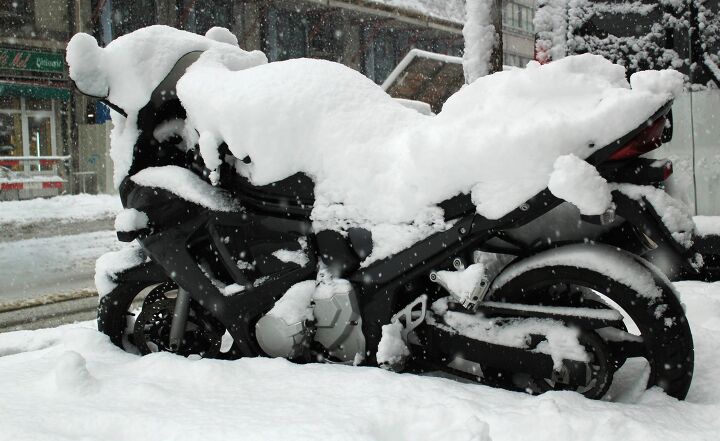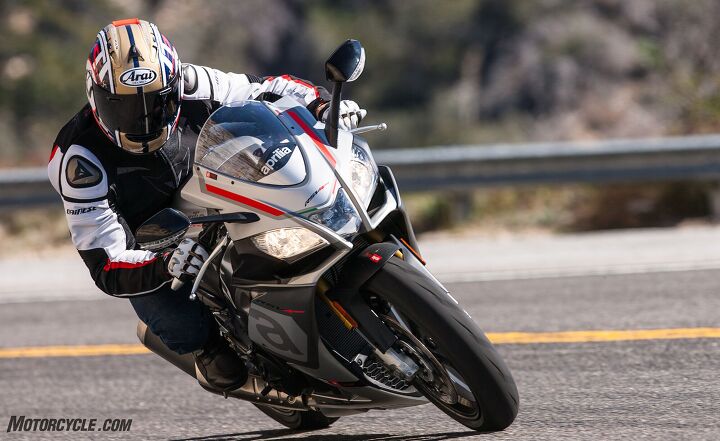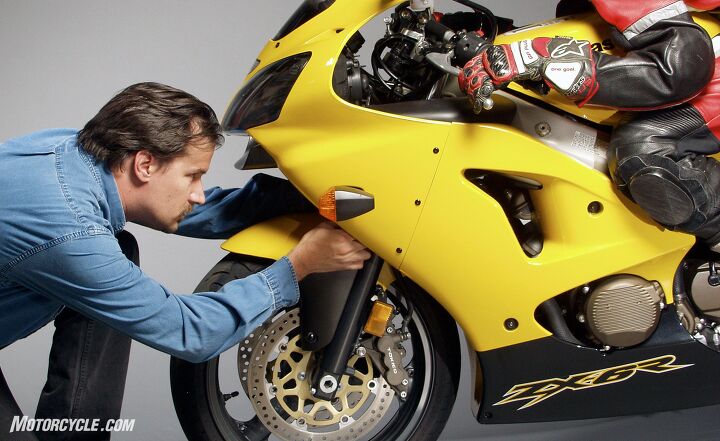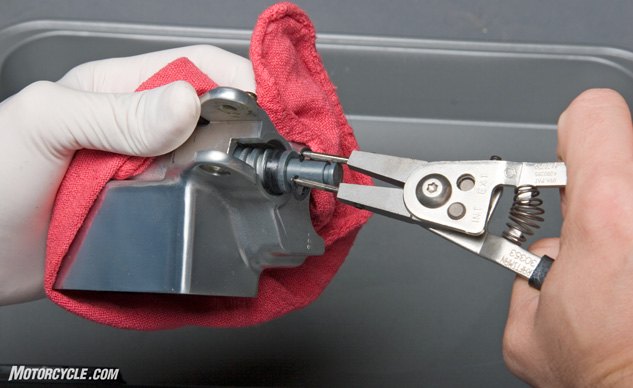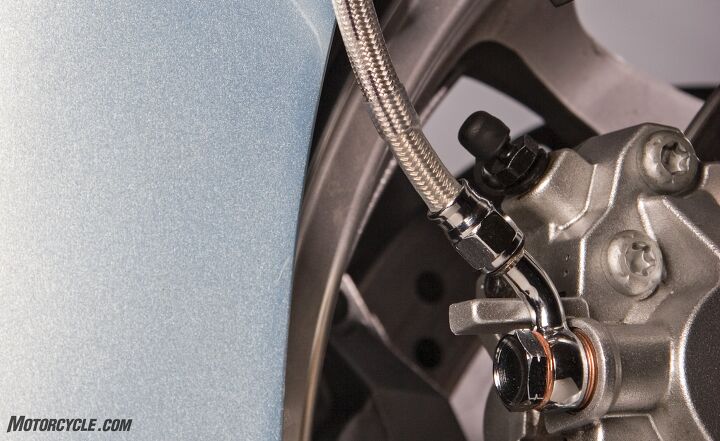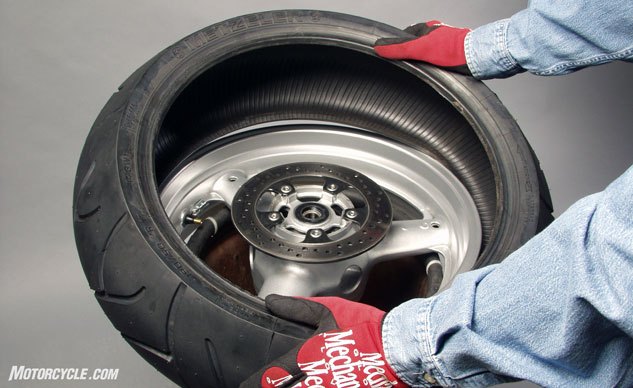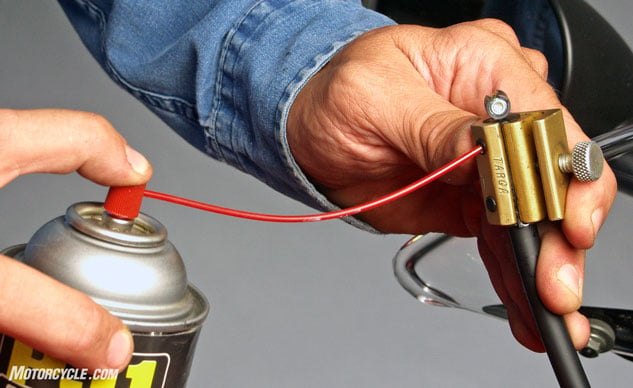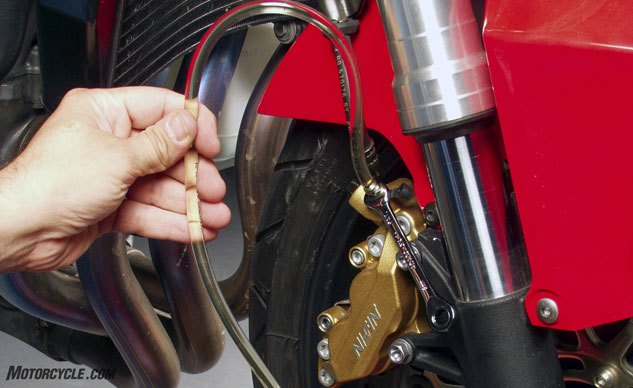how-to
How To Measure For A Motorcycle Helmet
How To Protect Motorcycle Chrome
There is sound logic behind popping a bottle of your favorite suds, saddling up next to your bike after a Sunday ride, and going over every shiny bit of chrome with a soft cloth to ensure its gleaming. Protecting your motorcycle’s chrome is about getting ahead of the game with preventative maintenance, ensuring that all the glistening chrome-plated components can continue to thrive for years. In this article, we’ll discuss the nitty-gritty related to chrome, from why it’s used to how owners can keep it in excellent shape. Sound good? Break out those clean rags and get ready to put in some elbow grease.
How To Clean A Motorcycle Chain
Accessorizing Your Motorcycle
Motorcycle.com is no fashion rag, but maybe the fashion maxim of “Accessorize, accessorize, accessorize!” has some merit here after all. That’s because changing the looks and capabilities of your bike can be just as important to a happy ride as is changing apparel for your work or social life. Just for instance, adding a taller or shorter seat tailors the bike to your proportions better, thereby improving ride comfort. Adding a windscreen, a USB adapter, and a tail bag turns it into a light tourer. Getting front and rear shop stands make cleaning and servicing the wheels way easier and more fun. And then, adding custom-style anodized parts adds a bit of bling that really stands out.
How and When to Swap Motorcycle Brake Pads
Checking the condition of your disc-brake pads should be a regular part of servicing your bike. For example, when you check tire pressures, oil level, or change the oil and filter, also check all brake pads for wear. Another opportunity to check them is when you’re washing, drying, and polishing your bike. Quite seriously, we’ve found loose and broken spokes, damaged tire tread, missing cotter pins and circlips, and other concerning factors simply because we had hands on the bike while cleaning it.
How to Change Your Own Oil
If you’re a new rider, among the most satisfying experiences you can have is servicing your bike. That’s because, frankly, motorcycling is like a relationship, and the more you know about and can well care for your machine, the fuller and deeper the experience will be. How’s that for philosophical? Anyway, there are practical reasons for changing your own oil, too: 1) It saves money because you’re contributing the labor for free; 2) You are learning about tools, bolts and seals, parts and assemblies, and how everything works; 3) You are growing your self-sufficiency, which is always a good thing out there in the physical world; and 4) It’s all to perform an essential job right, and it will inspire you to tackle other maintenance items later on. (And someday, maybe even adding bike accessories or doing an entire build?)
Basic Motorcycle Maintenance Tips
Everyone has probably heard of the famous book, Zen and the Art of Motorcycle Maintenance. But what’s that mean, exactly? To keep it simple, let’s forget the Zen part here, and just talk about the importance of maintenance. You’ll want to maintain your motorcycle properly because that way, you’ll get the most reliable and enjoyable riding experience, and more importantly, by keeping on top of maintenance, your bike will help take care of you, giving you a safer riding career. In all areas, your factory owner’s manual has precise guidance for what steps to take, what parts and tools are needed for your model, and when to do the work. But what if you’ve bought an older bike, say, that’s missing its manual? Let’s consider some fundamentals.
How to Set Up Your Motorcycle Controls to Fit
Riding well is all about control. And the more precisely your controls are set up and operate, the better the experience. The basic idea is to position the controls where you can instantly and accurately use them. Your riding experience depends on this – and so may your health and safety in a moment of crisis. In almost all cases with motorcycles, there are five individual controls to consider – throttle, clutch, shift lever, front brake, and rear brake. We say “consider” instead of “adjust” here for a reason – not all may be fully adjustable on all machines. But in most cases, built-in adjustability should provide a reasonable accommodation for different rider sizes and riding postures. And fit is key.
Beyond the Basics
Whether you’re just getting interested in riding, a newly licensed rider, an experienced one, or even a racer, you can always improve – both in skills and safety. That the mission and role of the Yamaha Champions Riding School (YCRS), or ChampSchool for short. Led by racing and coaching veteran (and incredibly nice guy) Nick Ienatsch, the school literally has something for everyone, no matter your location or experience level.
Riding in a Group
What was that classic grandparents’ advice, “Pick your friends wisely?” The same goes for riding in a group. Imagine, if you will, the last lap of the Daytona 500 with the entire field packed together at nearly 200 mph. Or the peloton rushing along some winding backroad in the Tour de France. One wrong move and it’s mayhem for everyone. These are extreme examples of chain reactions in a pack of moving vehicles, but to some extent, that is the risk for motorcyclists riding in a group. And it’s exactly why you should, as the grandparents warned, pick your riding partners wisely.
Riding With a Passenger
Motorcycle riding is so much fun, about the only way to make it better is riding two-up with your bestie. But not so fast there, cowboy (or cowgirl)! Just having a motorcycle endorsement on your license doesn’t make you a qualified captain of a two-passenger, two-wheeled land cruiser. Like playing in a tight band, riding two-up is an acquired art that requires timing, synchronicity, and practice, practice, practice. At least, to do it safely and well. Here are some Motorcycle.com tips for getting the most out of your rider/passenger debut performance.
How to: Motorcycle Braking
When you’re first learning to ride, coordinating a motorcycle’s throttle, clutch, shifter, front brake, and rear brake can seem like a confounding task – and especially doing so smoothly. Fortunately, though, if you’re already a bicycle rider, the clutch and front brake levers will seem natural enough. (Until, of course, you notice that a bicycle’s front brake lever is on the left and the front brake lever on a motorcycle is on the right…but that’s a mystery we shall not address here.) Instead, let’s just discuss brakes and braking.
City Riding for New Riders
Apart from a racetrack or a rocky, off-camber clifftop trail, there may be no more demanding riding conditions than are found in a congested city. Cars, trucks, motorcycles, and (ever more frequently now) electric bicycles surround you, traffic controls including lights and signs control you, and multiple lanes (including left and right turn lanes), plus alleys and driveways demand choices. It’s basically like a Super Mario game, with you in the middle.
Proper Cornering Technique
Want to see some feathers fly? Sit down with a bunch of biker friends and ask their opinion of proper cornering technique. That fox-in-the-henhouse moment will probably jumpstart a flurry of opinions – some well-considered theory, others emphatically proven by deeds on the racetrack, and others downright dorky. Here are some cornering technique suggestions for learning riders.
Survival Skills for New Riders
Aboard their motorcycles, new riders face a brave new world. Not literally, of course. But from the standpoint of learning fresh physical skills, powers of observation, actions and reactions, and embedding vital strategies for survival, it certainly is. If this is you, first and foremost locate, attend, and successfully complete a Motorcycle Safety Foundation (MSF) course in your area. Then prepare for and pass the written and riding tests, as required by your state’s department of motor vehicles (DMV).
Guide to Motorcycle Rain Gear
Stifling heat in Death Valley. Biting cold in Michigan winters. Hail and snow in the Mojave. Flattening winds in the Texas panhandle. You name it, we’ve ridden through it. Oh yes, include in the list a drenching cyclone in New Zealand. In that one, veritable buckets of rain per minute descended on our group like heaven’s own turbocharged water wastegate, driving us into the nearest general store, looking for new gear to wear. (All we found were wool mittens.)
Choosing the Right Motorcycle Helmet
For motorcyclists, helmets can range in importance from their most essential piece of riding kit to a mere afterthought. The drivers for this may be complex, but our guess is that the more serious you are about riding, the more serious you are about helmets. And conversely, if you treat riding lightly (perhaps as only a secondary activity), a helmet may register as no more important than a backpack, sunglasses, or shoes.
What Gear Does a New Rider Need?
Hey! Interested in opening a big can of worms? Just ask a group of riders what kind of gear they wear, and then for good measure, what kind of gear they would or should wear if they were going to “do it right.” It’s likely that the responses will have some commonalities – and some differences too. We’re here to say that this is normal because riders are individuals; they evaluate comfort and risk uniquely, and they all draw from their own unique experiences in making their judgments.
What Do I Need to Know About Motorcycle Insurance?
Like bills, deadlines, and taxes in everyday life, motorcycle insurance is something you’ve got to buy and maintain if you want to ride on the street. It’s a hugely complex business based on mathematical models, profit and loss projections, shifting markets and motorcycle types, rider ages, and other fun stuff. If you’re just starting to ride, here’s some of what you may need to know.
Which Type of Motorcycle is Right for You?
Ah, the good old days. Back when the Watergate scandal was a big deal, so was motorcycling. The industry had exploded in size and scope to historic levels, thanks to the coming of age for Boomers and America’s appetite for outdoor experiences. And yet…in terms of bike choices, you could only buy a standard bike like a Yamaha XS650, a motocross bike like a Penton 125 Six-Day, an “enduro” (on/off road) bike like Yamaha’s DT3 2-stroke, an Italian scooter, or maybe a big hog straight outta Milwaukee. Needed more from your mount? From there, you really did have to bend brackets and turn wrenches to “make it your own,” as current bike advertisers love to say.
5 Tips for Financing Your Motorcycle
Like it or not, the backbone of American consumer culture is financing. It’s a honeytrap, that nice new bike, gleaming with promise of great times, sitting there on the showroom floor. It can turn from fantasy ride to literally yours for a simple signature or three, and 24, 36, or more E-Z monthly payments. So, what’s not to like? The unassailable logic of living for today has some merit. You’re only young once; there are only so many good summers in life; and friendships, work or school transportation needs, plus unique living environments, sometimes align just right for a motorcycle ownership. And maybe that’s right now. However, if you can’t write a check for a new bike or borrow from friends or family to cover the purchase, that basically leaves financing. Here are five straight-up tips to consider when heading down this path.
Buying a New Vs. Used Motorcycle
Several decades ago, we went to lunch with an executive VP of a big advertising agency. Forgoing a restaurant, he suggested going to the local motorcycle dealership and having a look around. There he spotted a lineup of new 250cc motocross bikes, freshly assembled from their shipping crates. Dressed in a crisp business suit and tie, he hardly looked like the potential buyer of a new dirt bike – more like a touring rider, if anything. But he approached the nearest salesman, pointed at one of the new race bikes, and simply said, “I’ll take that one” while handing over a credit card. “I’ll pick it up Saturday.” The young salesman was visibly stunned, and to this day that was the easiest sale we ever witnessed.
5 Things You Need to Know About Buying a Motorcycle
Does the adage, “Look before you leap” sound familiar? It should, for anyone who loves jumping across gaps or over cliff sides. But philosophically, it’s also smart when you’re buying a motorcycle, new or used. Not only because examining the product may save you from expensive repairs later, but because closely studying your purchase motivations will help you buy the bike you need. Trust Motorcycle.com on this – getting the right machine for your skill level, and for what you want to do in the sport, is crucial. Read on for some useful tips on what to buy, and how to do it.
How Can I Find Local Motorcyclists to Ride With?
When it comes to motorcycles, sharing life’s experiences is truly magical. Whether that’s hitting the highway for an extended tour, a night ride into the country, learning to do it in the dirt, or just a Saturday morning java run, it’s always better with buddies.
Where Can I Get Motorcycle Training?
If you want to play an instrument well, how do you go about it? Focused academic study perhaps, or take lessons, join a band, watch YouTube, connect with friends – or maybe just muck about until something clicks. Well, the same might be said for learning to ride well. Some of the best racers and riders in history were essentially self-taught… especially prior to the industry becoming so specialized. But really, the best way isn’t through such trial and error – it’s formal training.
What’s Required to Get a Motorcycle License?
The United States is a big place with tons of states, but fortunately, the motorcycle licensing rules and requirements are similar in many of them. This can be true even from largest to smallest bike states. For instance, with nearly 1 million registrations, New York tops the list for “active” motorcycles, followed closely by California and then Florida in third. On the flip side, little Delaware and Rhode Island have only about 25,000 registrations apiece. Now, among these states, in California, fledgling riders can get a “learners” permit at age 15 ½, but in Delaware the rule is 17 years old. Other states may further differ, but likely not by much.
Finding Your First Bike
When learning to handle boats, bikes, and boa constrictors, as a universal truth it’s better to start off small and work up from there. That’s because skills build over time, and at first, smaller and lighter means easier to handle. Fortunately, in the case of motorcycles, there’s a lot to love in the small-displacement ranks. The ride experience is enchanting, and some models even share technology with image-leading flagships, including electric starting and fuel injection, liquid-cooling, and disc brakes with ABS.
Why Ride a Motorcycle?
The marriage of the early 20th Century “safety bicycle” and a simple engine created the motorcycle template as we now know it. As such, at their design core, motorcycles are simple, efficient devices, a trait they’ve possessed for over 120 years. But it takes more than efficiency to ensure the survival and evolution of any consumer product. The secret other ingredient is that motorcycles feed us on some essential levels, from the joy of being in motion, to rewarding us for problem solving, to promoting social interactions, to building a skillset that “normal” folks don’t possess. Read on for seven reasons you might want to ride a motorcycle.
How To Clean A Motorcycle Helmet
Let us sing a song of praise to our motorcycle helmets! Their primary purpose is to sacrifice themselves to protect our noggins. When you bang your head, their outer shell crushes to spread out and lessen the force of the impact before the soft EPS liner compresses to mitigate G-forces before they reach your delicate brain. But that’s not all helmets do. They protect you from abrasion in a slide, keeping your face pretty, and they absorb all manner of small impacts from juicy or stinging bugs to pebbles that your riding buddy’s sticky rear tire kicks up to face level. On the inside, their padding helps keep you comfortable by wicking away sweat while doing its best to limit noise and protect your hearing.
New Rider: Riding A Motorcycle In The Wind
As a novice motorcyclist, you’re already well aware that a motorcycle is inherently unstable, and if you don’t intervene on its behalf, it could end up lying on its side. So, what do you do when you find yourself riding on a windy day? With a headwind, you just suck it up and deal with it if you don’t have a windshield. You probably won’t notice a tailwind, but it will extend your stopping distance. You’ll need to learn how to dance with the wind when it blows from the side.
New Rider: Two-Fingered Braking
Many of us are products of MSF rider education courses and are quite familiar with the admonition to use all four fingers on the front brake for maximum control. While I support that rule for beginning riders, it is one that we quickly outgrow once we start logging miles out in the real world. I first began to notice the shortcomings of this rule when I anticipated in traffic that I might need to use the brakes. Covering the brake lever with four fingers makes it quite difficult to control the throttle. Then there were the magazine photos of all my heroes blatantly using two fingers on the front brake. Two-fingered braking appeared to address the problems I was encountering as an urban rider. (It was only later that I learned that it opened up a new world of braking techniques.)
The Triumph Adventure Experience
Did you know Triumph Motorcycles run a state-of-the-art training and adventure experience center in south Wales? No? That’s the problem. Well, maybe not much of a problem for Triumph since they seem to be running at near capacity out of the space they’re in. Just outside Ystradgynlais (Welsh names and words make me happy this is written and not a video), just northwest of Cardiff, sits an unassuming world class ADV headquarters just a few miles from a rented forest in which Triumph runs its training.
How To Ride A Motorcycle On The Highway Safely
For many new riders, the thought of riding on the highway for the first time can be frightening – right up there with public speaking and bungee jumping. The higher speeds and sea of cars around you can seem intimidating, but riding on the highway doesn’t have to be scary. In fact, highway riding is probably safer than scrambling around on surface roads, since everybody’s going the same direction at more or less the same speed, and, critically, there’s no cross traffic to dodge. Before you go tackling the freeway with confidence, here are a few tips we’ve gathered over the years for how to ride on the highway safely.
MO Wrenching: How To Properly Splice Wires
Time and again, I’ve had people tell me that they are afraid to modify their bike’s wiring harness to install a new accessory. Upon a little digging, the bugaboo is usually fear of splicing wires into the bike’s harness. While cutting your motorcycle’s wiring harness is not to be taken lightly and should only be attempted when you are certain as to which wires should be cut – by, say, obtaining the factory service manual – the process isn’t really that scary.
MO Tested: Cali Track Days
Has it already been two years since I started at MO? Wild. Time flies when you’re having fun, I suppose. One thing I have been asking, begging, hounding even, of my bosses throughout those two years was for more track time. I’ve been able to run through two schools: Superbike Coach and the Rickdiculous program, both of which I am very grateful to have attended, but without having the time to get out and follow up on those skills learned, it’s hard to advance to the next level. There’s really no substitute for seat time.
MO Maintenance: Clean Your Filthy Carburetors
Meanwhile on Facebook, where all us old guys hang out, the great Joe Gresh wants to know how best to clean this truly heinous carburetor from his Kawasaki Z1 project? He probably already knows, since Gresh is a master of many mechanical disciplines. Maybe master is the wrong word, but he seems to keep lots of old things running, builds plenty of new things, seems to understand electricity and pours many yards of concrete.
MO Maintenance: Repack Your Muffler
The price you pay for the extra performance and light weight of aftermarket-exhaust liberty is internal vigilance. You’ll need to repack your muffler with new, ahh, packing material now and then. Unlike your typical stock exhaust, which is built to last a lifetime with muffler baffles made of steel and other solid metals, most performance pipes are packed with fiberglass-like packing stuff that uses itself up over time, reducing performance as it gradually blows out the tailpipe, and producing more noise. I remember this full-race Akrapovic system being surprisingly quiet when we put it on here, how long has it been? About five years ago. Lately it seems like it’s gotten considerably louder, but that could be because all the new bikes I bring home seem to be getting progressively quieter? Anyway, repacking this thing is a good way to see how it’s done.
MO Wrenching: Air Filter Maintenance
Back in the Dark Ages, a great way to increase your bike’s horsepower was to toss the stock airbox, install a set of pod filters, and rejet your carbs. Well, all that changed with the advent of ram air, which forces cool, outside air into the airbox. The faster you go, the more air forced into the mixers, giving the bike more power. One thing hasn’t changed, though. For your engine to operate at peak efficiencies, the air filter needs to be clean to allow maximum airflow. Even though your EFI’s oxygen sensor can adjust the air/fuel mixture to compensate for a clogged filter. If you let your filter get dirty, you’ll still experience power loss and reduced gas mileage. Regular – or at least annual – cleaning of your bike’s air filter is a simple way to keep it running great.
Tips For Administering Motorcycle First Aid
The worst-case scenario has just happened: someone has crashed their motorcycle. You’re the first (and possibly only) one on the scene, and not knowing what condition the rider is in, it goes without saying that every second counts. Do you know what to do? What follows are some general tips to follow in case you’re put in the scenario to potentially save a life. In this lawsuit-crazy world we live in we also have to clarify the Motorcycle.com staff are NOT medical professionals, and everything mentioned here is superseded by proper medical training. Which brings up another point – if you don’t already have basic medical training, get it.
How To Clean Leather Motorcycle Gear
Motorcyclists and leather go together like chocolate and peanut butter. Seriously. Ask any motorcyclist what it was like when they bought their first leather jacket, and you may see grown men cry as they reminisce about the new leather smell and how, over time, the jacket came to fit them like a second skin. Unfortunately, riding in your favorite gear subjects it to bug impacts, dirt, and even rain, which all take away its luster. However, quality leather can last a rider many riding seasons and maintain that optimal balance between broken in and factory new – if a few care procedures are followed.
New Rider: How to Navigate Blind Turns
Riding a motorcycle on the street after you’ve become comfortable and proficient with its controls comes with its own set of obstacles and challenges, which are endless really, due to the constantly changing and/or unpredictable situations that can arise. There are a million different things a new rider will encounter on their motorcycle, but the most important thing you can do is be aware of your surroundings, pay attention and don’t let yourself get distracted. There’s too much at risk. The whole point of this New Rider: How To is navigating blind turns safely, and we’ll start with left-hand turns first.
How To Clean Textile Motorcycle Gear
When it comes to textile motorcycle gear, there’s a fine line between looking well-traveled and being just plain dirty. If you don’t notice when you’ve crossed that line, usually a riding buddy or someone close to you will let you know. For example, when I returned from my four-day Gold Wing Tour ride from Austin, TX, my wife wrinkled her nose and said, “That jacket’s filthy…and you kinda stink.” So, instead of ending up in a pile on the floor where I wanted to drop it after my 600-mile day (with a 102° fever), I carried my Spidi suit outside to my garage office and hung it up where it wouldn’t offend her delicate sensibilities. The things we do for love.
How To Winterize Your Motorcycle
The sad truth about motorcycles is that they need special treatment if they’re going to sit for even just a few weeks. The gas in the tank and the chemicals storing electricity in the battery are the first to suffer, and both of those are important for getting your bike back underway. However, many other things can accelerate the wear on your motorcycle if you don’t take care of them before an extended hibernation. Unfortunately, many riders don’t winterize their bikes for the off season and are greeted with an ugly surprise come springtime.
MO Wrenching: How To Adjust Suspension Damping
Modern sportbikes are impressive handling machines. While their rigid chassis and weight distribution have a lot to do with this, the fully adjustable suspensions can take much of the credit, too. Although many stock suspension components offer quite a bit of adjustability, many aftermarket units will give you even more flexibility. That’s the good news. Unfortunately, the plethora of suspension settings can be a double-edged sword that turns your state-of-the-art machine into a bucking bronco if you make ill-advised adjustments. Because of this, you will want to keep a record of any changes you make any time you step away from the manufacturer’s recommended settings. You’ll want to be able to go back to previous settings if you make changes you don’t like.
MO Wrenching: How To Set Suspension Sag
Lots of motorcycles now come with the full complement of adjusters on their suspension. However, even the most basic bike will let you, at the very least, adjust the rear preload. Let’s take a look at how you can set your bike’s suspension sag to get the most out of their damping capabilities.
MO Wrenching: Brake Master Cylinder Rebuild
Calipers aren’t the only part of the brake system that will need to be rebuilt occasionally. The master cylinder, which powers the entire hydraulic system, needs attention from time to time. If it has a problem, you won’t get full performance from your brakes. The most common issue is a piston with a worn primary or secondary cup, which allows hydraulic fluid to flow past the seal, resulting in low braking power or leaking at the brake lever. The master cylinder also has several tiny orifices that, if they clog, can prevent proper operation of the brakes. If you have gone through the trouble of rebuilding the calipers, you should spend the extra time to clean and inspect the master cylinder.
MO Wrenching: How To Install Braided Steel Brake Lines
Fitting a set of braided, stainless-steel brake lines to your motorcycle can have a dramatic effect on its stopping performance. The initial onset of braking will be much quicker since stainless lines don’t expand. Also, because the lines are sheathed in metal (usually with a protective plastic outer coating), you don’t have to worry about stainless lines cracking from age and exposure to the sun. Additionally, the teflon interior is less prone to becoming brittle than rubber. So, a trip to the aftermarket will give you better braking and longer-lasting lines, to boot. Let’s not discount how cool they look, too. That’s why you’ll find them on a ton of cruisers and not just sportbikes.
How To Make Clutchless Upshifts On Any Motorcycle
Remember when having a quick-shifter on a production motorcycle was a Big Deal? Now, the top-of-the-line bikes have both upshifting and downshifting covered with the auto-blipping throttles. So, where does that leave those of us with unassisted shifting on our motorcycles? Do we have to go buy gadgets like a HealTech Quick Shifter Easy? Of course, the answer is no. You just need to perform proper clutchless upshifts, like performance riders did for generations before quick-shifters became available. When it comes to downshifting, you’ll still have to use the tried-and-true method of matching the engine speed with the throttle while you manipulate the clutch.
MO Wrenching: How To Balance Wheels
Anyone who has witnessed a washing machine walking its way across the basement floor can understand how important balancing the load on rotating objects can be. Some people mistakenly think that, because modern wheels have gotten so much lighter and better balanced, they don’t need to balance wheels when fresh tires are installed. This is wrong. Even the smallest difference in weight is amplified many, many times as the wheel rotates. Also, your tires will wear more evenly and your bike will be more stable with balanced tires.
MO Wrenching: How To Change Motorcycle Tires
Why would anyone want to change their own tires? Isn’t it hard work that usually involves at least one bleeding knuckle? Don’t the tools cost a small fortune when you consider that shops only charge about 25 bucks for the service? Well, some riders don’t live within a few miles of a bike shop. And some folks, well, they’ve always got to do things themselves.
MO Wrenching: How To Lube Cables
Lubing your motorcycle’s cables should only take a few minutes, but it pays dividends every time you operate a control. For the throttle cables, unscrew the throttle housing on the grip and adjust the cables for maximum slack. After you release one of the cables, the other will slip right off. For the clutch cable, screw the adjuster all the way in for maximum slack but line up the slot in the adjuster with the slot of the lever holder. You should be able to pull the end of the cable free of the adjuster and release the cable.
Basic Maintenance: How To Adjust A Clutch Cable
It’s not rocket science, is it people? We codgers know the value of keeping cables lubed and adjusted, along with positioning all the bike’s controls for optimum ergonomic comfort, preferably before the first ride, but I, for one, wasn’t born with this knowledge.
MO Wrenching: How Do I Change My Coolant?
We recently covered how to check to see if your coolant is in good enough condition to protect your bike during its winter hibernation. Even if your coolant can handle the temperatures of winter, most manufacturers have a recommended service interval of two years or so between coolant swaps.
MO Wrenching: How To Bleed Your Brakes
If you read our recent Battle Of The 125cc Ankle Biters, Part 1, which included the Kymco K-Pipe, you know that it had some front brake issues that “Guns” Roderick decided to use as an opportunity to work on his arm strength via repeated hand motions – namely bleeding the bike’s front brake hydraulics. While the brake’s power was improved, it never reached the performance level we felt it was capable of achieving. Naturally, the topic of brake bleeding technique came up. This oft-neglected maintenance task is fairly easy and should be done to replace the hydraulic fluid at the intervals recommended by your bike’s manufacturer.
MO Wrenching: Brake Caliper Rebuild
The photo above points out how important properly functioning brakes are to getting the most performance possible out of them. Brakes, however, are instrumental in more than riding quickly. They are necessary for your safety.
BMW Off-Road Academy and RawHyde Adventures Rider Training Review
It’s remarkable in this modern day and age that some people get surprised when I tell them I ride motorcycles. More women are riding today than ever, but I guess, I don’t really fit the stereotypical mold of a female rider.





